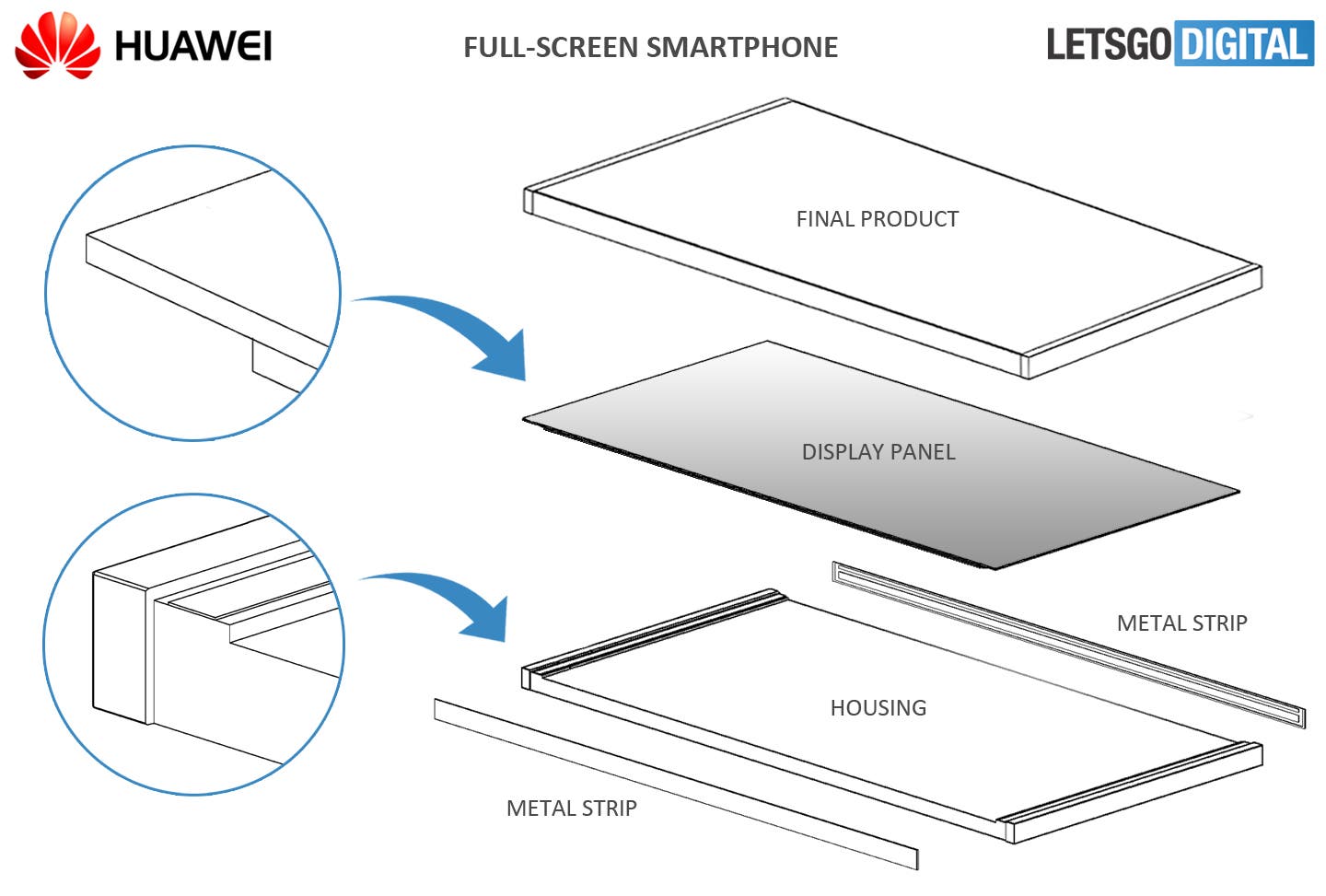Back in February, Huawei applied for a patent with the United States Patent and Trademark Office (USPTO) and the World Intellectual Property Organisation titled “Mobile Communications Device”. The patent detailed a new way of designing a phone/tablet that would allow for even more screen real estate than is currently offered by phones in the market. The patent was approved in the first week of this month.
To summarize, the patent details a new smartphone that is modular in design. The driving force behind this idea are the issues faced while designing a smartphone with extremely slim bezels. The design combats these issues by implementing metal strips onto the sides instead of a regular frame. The metal strips are glued to the housing of the phone/tablet bu using glue. Huawei claims that the application is done is such a professional manner that it allows for the device to be waterproof, dustproof and anti-static. The touch-screen is recessed inside the housing, thus allowing for little or no pressure on the sides. The result is barely any bezels on the side with slim bezels on the top and bottom.
Sounds like a good idea, but will modularity really allow for better water/dust proofing? A unibody frame is generally much more sturdy if not flexible. Although the metal strips will allow for a bezel-less display, they will also become one of the points of structural failure. This would inadvertently make the phone easy to break. We all remember Apple’s “Bendgate”, don’t we? Currently, the market is flooded with near bezel-less designs, Vivo’s Nex series, Xiaomi’s Mi Mix series to name a few, that are using a singular frame with glass on the back and top or a metal unibody and are sturdy. No one would want their phone’s sides to come off while they pull the device out of their pockets. What Huawei is trying to implement or rather theorise here, might not be the best of ideas.





